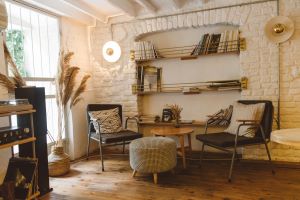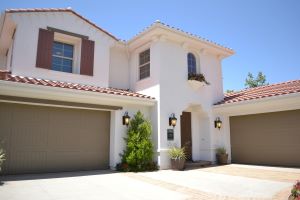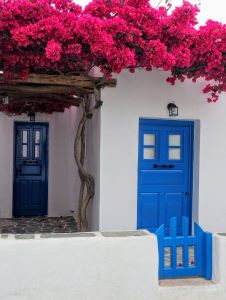
Buying a gîte or creating a gîte is an important decision that can transform your professional and personal life. The gîte, as a tourist accommodation, offers a unique opportunity to generate income while enjoying a pleasant living environment. This article will guide you through the advantages and disadvantages of each option, as well as the key steps to making your project a success.
Saving time: Buying an existing gîte means you can get your business up and running more quickly, because the infrastructure and fittings are already in place. This allows hosts to welcome guests right from the start. This also includes the possibility of running a furnished gîte without having to worry about the initial furnishings.
Existing clientele: You often have a loyal clientele and an established reputation, which makes it easier to welcome guests and build loyalty. What's more, the gîte's name and brand may already be recognised in the tourism sector, allowing you to take over a business that's already well established. Having a quality label can also boost the confidence of potential customers.

Less flexibility: You are limited by the existing layout and style, which may require costly renovations to match your vision. Adapting the venue to the specific expectations of guests may require adjustments. For example, transforming a room to better meet guests' needs may involve additional costs.
Competition: You may face strong local competition, especially in popular tourist areas, where other rental companies offer similar rooms. Standing out from the crowd often requires a strong marketing strategy and exceptional customer service.

Potential for innovation: You can introduce unique and innovative concepts to attract a specific clientele, including additional services such as access to facilities. A modern, well-equipped gîte can include facilities such as a washing machine and a high-quality internet connection.
Controlled initial cost: You can control costs by choosing materials and equipment that suit your budget, allowing you to make savings on fit-out and layout. This will also enable you to comply with environmental standards and obtain quality labels, if desired.
Time and effort: Setting up a gîte takes a lot of time, effort and planning. The choice of location and partners is crucial. The construction and fitting-out process can take several months or even years. Proper training of the team in place is also essential to guarantee a quality service.
Financial risks: Costs can exceed the initial budget, especially if unforeseen circumstances arise, such as changes in standards or regulations. Unexpected costs may include repairs to infrastructure such as plumbing or the water system. Having the right insurance can help manage these unexpected costs.
Administrative delays: Administrative procedures and authorisations can take time and delay the opening, particularly to obtain planning permission or the appropriate legal status. This may include obtaining micro-business status or setting up a company to manage the gîte.
The first step in buying a gîte is to choose a region that is attractive to tourists. Assess the general condition of the gîte and any work that needs to be done. Analyse past financial performance and revenue forecasts to ensure that the project is profitable. A good location can be decisive, and looking for a gîte in an area of France renowned for its tourist heritage can increase the potential for profitability. You should also consider whether the gîte is furnished, which can be an added advantage when buying.
Prepare a personal contribution to convince the banks and compare loan offers to choose the one that best suits your project. Find out about the subsidies available for buying gîtes. Certain types of financial aid can reduce the cost of your property investment. It's also important to understand the tax implications, including allowances and the tax regime applicable to income generated by the gîte.
Negotiate the purchase price based on the condition of the property and the work required. Then take the necessary steps to finalise the purchase. Obtain all the necessary guarantees and follow professional advice to ensure that your purchase is secure. Respecting deadlines and legal procedures is essential to avoid future complications.
Start with a market study to analyse tourist demand in the region. Define a unique concept that will attract customers and draw up a detailed business plan to convince investors. Remember to set your project apart from others by its originality. The information gathered during the market study will enable you to better adapt your offer.
Prepare a personal contribution and compare loan offers to choose the one best suited to your project. Find out about the subsidies available for setting up gîtes. These grants can make a big difference to your project. Training in financial management can be beneficial in maximising the return on your investment.
Select a plot of land that is well located and suited to your project. Hire professionals to build and fit out the gîte, and purchase quality equipment to ensure guest comfort, such as washing machines and other modern conveniences. Beautiful architecture and comfortable interiors can attract many guests.
Create an attractive website with quality photos and be active on social networks to attract customers. Offer special deals to attract new visitors. Establish partnerships with local players to increase your visibility. The means of communication you use must be adapted to your target clientele, and the desire for a memorable stay must be at the heart of your marketing strategy.
Whether you choose to buy a gîte or create one, each option presents unique advantages and challenges. The key is to prepare your project well, carry out thorough market research and plan your financing carefully. Get expert advice and a comprehensive guide for every stage of the process. With the right preparation, you can turn your dream of owning a B&B into a profitable and fulfilling reality. Whether it's a hotel, a small cottage in the countryside, or a family home, the wealth and rate of return will be there if the management and ownership criteria are met.